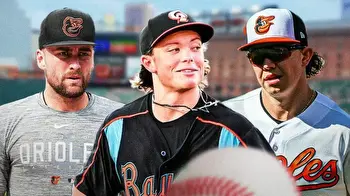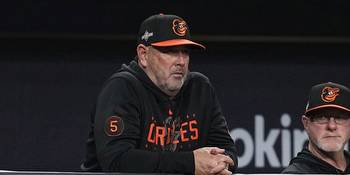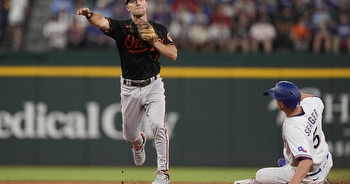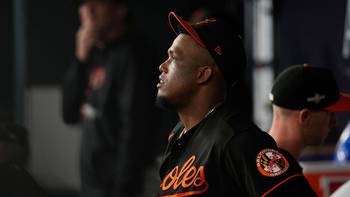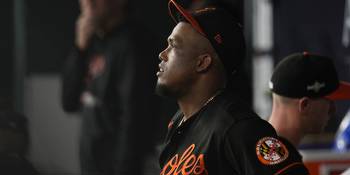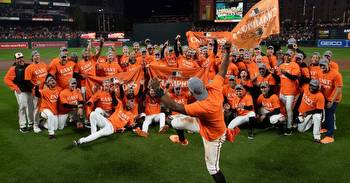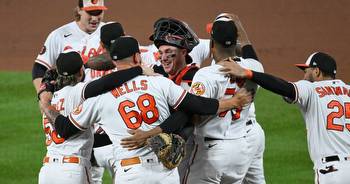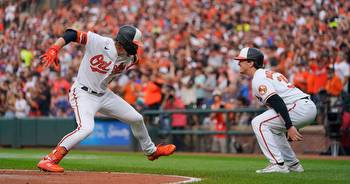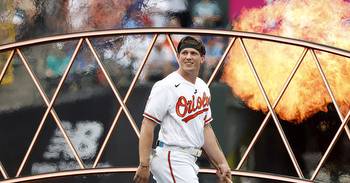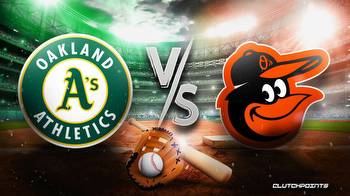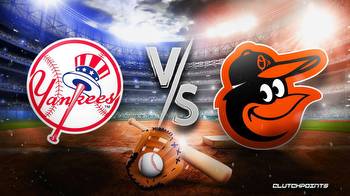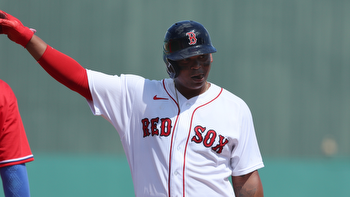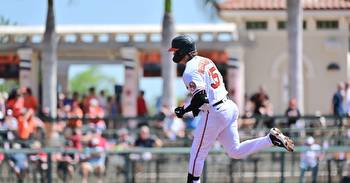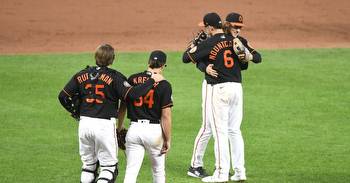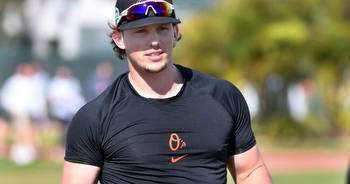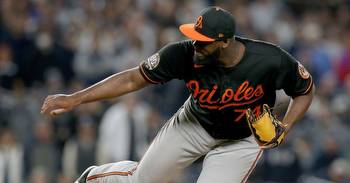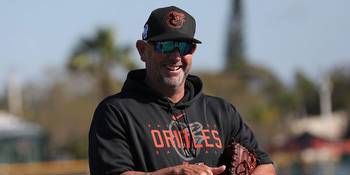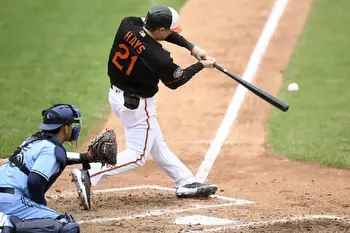Some Orioles players ignore the predictions. Others use them as fuel.
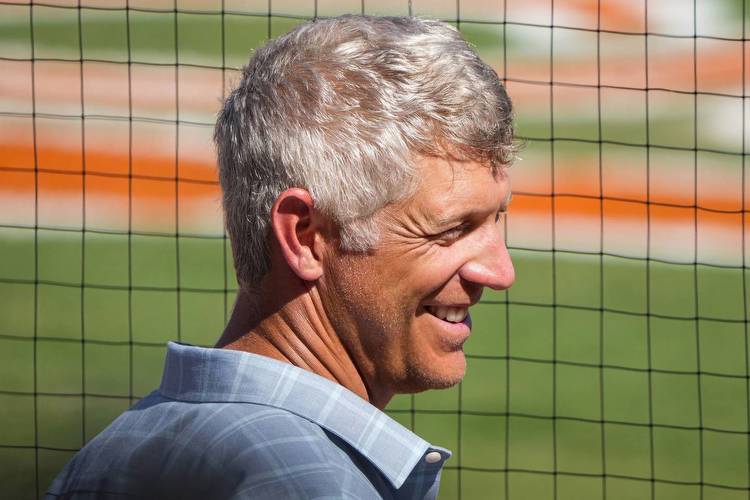
SARASOTA, Fla. — Anthony Santander considered it, then shook his head slowly at the mere suggestion.
“Expectation? Nah,” Santander said. He has no use for that word. “I don’t like expectation and I don’t like prediction.”
But he still hears both, whether he wants to avoid them or not. It’s impossible to be in the Orioles’ clubhouse, or turn on the radio or television, and not hear people discussing their expectations for what a young, talented team could blossom into as spring turns into summer and then fall.
Still other people predict the Orioles will wilt as the season grows older.
On the radio, manager Brandon Hyde heard one end of the spectrum, when commentators on MLB Network hypothesized that the Orioles would still finish last in the American League East.
Kyle Gibson, meanwhile, heard the other, from none other than the Orioles front office: They told the right-hander about how Baltimore produced one of the best records in the American League after the All-Star break, and how, with a few key additions, that progress could be prolonged.
Regardless of whether the expectations are high or low, they’re there.
They formed during last season, when the Orioles compiled their first winning record since 2016. They percolated through the winter, even as Baltimore passed on making a splash in the free agent market. Then, executive vice president and general manager Mike Elias declared the rebuild over.
“Really for the first time since we’ve been here,” Hyde said at the time, “we want to build off last year from the expectation standpoint.”
And as spring training ends and opening day approaches Thursday in Boston against the Red Sox, those expectations are palpable, even as Santander shook his head to dismiss them from his mind.
“Internal expectations in this locker room are always going to be higher than the external ones,” Gibson said. “As a group, we know as a unit what we’re capable of, and you always expect yourself to reach that level. And as you bring guys up, or John Means comes back, you look at those things happening, all of a sudden, you can get a little more excited and allow those expectations to hopefully turn into realities, and before you know it, you look back and you had a pretty memorable season.”
Each player has a different approach. Some go out and embrace the idea that Baltimore is aiming for its first playoff berth in seven seasons. Others acknowledge it but put it to the side, noting how focusing on such a big-picture goal can create stress in a season that requires physical and mental stamina.
Whatever the approach, the underlying belief is there: The Orioles are aiming to make the postseason, building upon their 83 wins from a year ago.
Those 83 wins came as a surprise to many — even those within the clubhouse as spring training broke this time last year. Ultimately, Baltimore fell short of sneaking into an unexpected wild card place, but their element of surprise on the rest of the league is gone.
“I think that’s probably the biggest difference, coming in this year, knowing exactly what we can do,” right-hander Bryan Baker said. “Where last year at this time, I felt like it was a little bit more in question. Just more confidence, and that’s half the battle right there.”
When Elias became general manager after the 2018 season, he had the task of overseeing a rebuild that had begun in earnest with the trade of infielder Manny Machado that season. He held the first overall pick in the 2019 draft to aid his start, and he made no mistake by selecting catcher Adley Rutschman and, a round later, infielder Gunnar Henderson.
As the 2022 campaign progressed, Baltimore received those in-season boosts. The Orioles were 16-24 before Rutschman made his debut May 21. From then on, Baltimore went 67-55 — finishing three games back of a wild card berth — with a 10-game winning streak at one point that was the franchise’s longest since 1999.
“The season is 162 games. Anything can happen,” Santander said. “See, nobody believed in us last year. But when we got the winning streak, everybody start, ‘Oh, shit.’ We’re down early in the season, they closed their eyes. They opened, and we were fighting for a spot in the playoffs.”
That spot in the postseason didn’t materialize, as late-season stumbles in key series against the Boston Red Sox, Detroit Tigers and Toronto Blue Jays in September proved costly.
Left-hander Cole Irvin, traded to Baltimore from Oakland this offseason, wasn’t there to experience those missteps. But he understands how small moments can prove pivotal over the course of a year — lessons he learned playing with the Phillies in 2019 and Athletics in 2021.
Philadelphia needed a solid week of baseball to secure a playoff place. Instead, the Washington Nationals swept them in five straight games to secure a wild card placement. Two years later, Oakland led the American League West into late June, then finished third in the division and missed the postseason altogether.
“My college coaches called [the scoreboard] the lighted monster, because if you stare at that too long, you get caught up in the game, you get caught up in the moment. Just focus on your job,” Irvin said. “From ’19 and ’21, those are the things I look back on. If we just took care of some small things, three, four wins here and there, we might’ve been in a different position.”
But the luxury of a 162-game marathon is there’s time to turn around a poor start. The 2019 Nationals, for instance, started 19-31 before winning the World Series. Right-hander Austin Voth was in the clubhouse for part of that season, and he recalls the pressure that can form when there are high expectations out of the gate — and the necessity of staying together as a unit.
Oakland began with a six-game losing streak in 2021. Then Irvin recalls the veterans in the clubhouse began staying late after games to discuss the losses. Eventually, during one of those sessions, they decided to play a group game in the clubhouse to relax.
“And the next day, we won,” Irvin said.
Adam Frazier, another offseason pickup, was part of a Seattle Mariners team that broke a 21-year postseason drought. “You gotta think about making the playoffs,” Frazier said, otherwise the confidence won’t be there to do so.
And beyond that, when the eventual struggles mount individually or for the team, Frazier knows what to do. He’s taken prospects out to dinner this spring, and he often tells them to use off days away from baseball — to get it out of their heads completely.
“It turns into a culture where you know how to win the games that are close,” Frazier said. “You know how to act and react in the close game at Yankee Stadium instead of the kind of ‘uh oh’-type moments that happen late in games.”
There are few players around the clubhouse who understand the feeling of losing 100-plus games. There’s Santander, Austin Hays and Cedric Mullins. Left-hander John Means made an All-Star team in 2019, one of the lone standouts from a 108-loss campaign.
They’ve watched the steady rise and accumulation of prospects acquired through the draft, an improved international scouting network and trades. Means said he could see the building blocks in 2019, leading to what’s considered the top farm system in baseball this year.
Now, Means said, “the tide has finally risen enough to where we’re getting that talent at the big league level.”
There’s Rutschman and Henderson. Right-hander Grayson Rodriguez shouldn’t be far behind, despite being optioned to the minor leagues Monday. Baltimore has 83 wins to build off and internal expectations to push for a playoff place despite the knowledge that it won’t be a cakewalk in the American League East.
It’s all noise to Santander, though, and with a shake of his head, he bats it away. After all, no amount of projecting can account for the whims of a 162-game season.
“As soon as that first pitch is thrown on opening day,” Irvin said, “I’m excited to see what we do.”
